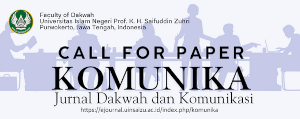MEDIA AUDIO VISUAL SEBAGAI SARANA PENGENALAN EKSPRESI EMOSI
DOI:
https://doi.org/10.24090/komunika.v6i2.353Keywords:
ekspresi emosi, audio visualAbstract
Media can be exploited for various purposes, and each media has its specificcharacteristics for specific purposes. The messages of emotional expression throughaudiovisual media can be one means to recognize the competencies of individuals inidentifying the emotional expression. The emotional expression is defined as a patternformed in the facial expression in relation to the types of emotion perceived. There are fourtypes of emotional expressions including feelings of anger, sadness, happiness, and scare.This research was aimed at developing instruments to recognize the emotional expressionsby using audio visual media.Subjects involved 32 graduate program students of Faculty of Psychology, Gadjah MadaUniversity, Yogyakarta. Data were collected by using rating scale to recognize the emotionalexpression(feelings of angry, sad, happy, and scary). Quantitative analysis were used in thisresearch with the result of assessment on raters’ responses as additional data. The results ofraters’ average assessment showed that the scenes 1 and 13 indicated the highest score forthe expression of angry feeling, the scenes 10 and 14 indicated the highest score for theexpression of sadness, scenes 11 and 15 the highest score for the expression of happiness,and scenes 8 and 12 the highest score for the expression of scare. The fragments of thescenes were able to be exploited as instruments successfully passed the selection to recognizethe emotional expression.Downloads
Download data is not yet available.
Downloads
Issue
Section
Articles
License
Authors who publish with this journal agree to the following terms:
- Authors retain copyright and grant the journal right of first publication with the work simultaneously licensed under a Creative Commons Attribution-ShareAlike 4.0 International License that allows others to share the work with an acknowledgement of the work's authorship and initial publication in this journal.
- Authors are able to enter into separate, additional contractual arrangements for the non-exclusive distribution of the journal's published version of the work (e.g., post it to an institutional repository or publish it in a book), with an acknowledgement of its initial publication in this journal.
- Authors are permitted and encouraged to post their work online (e.g., in institutional repositories or on their website) prior to and during the submission process, as it can lead to productive exchanges, as well as earlier and greater citation of published work (See The Effect of Open Access).
























